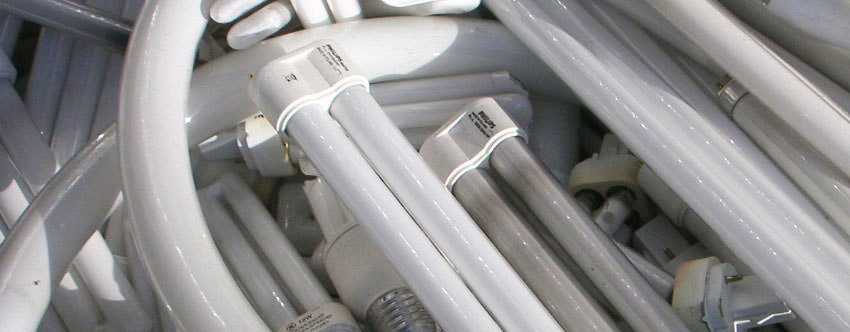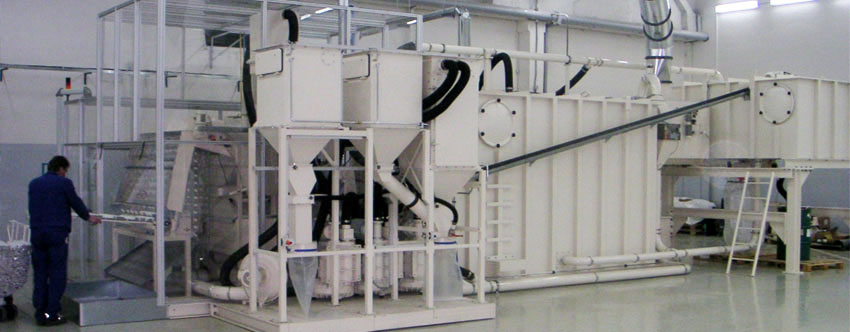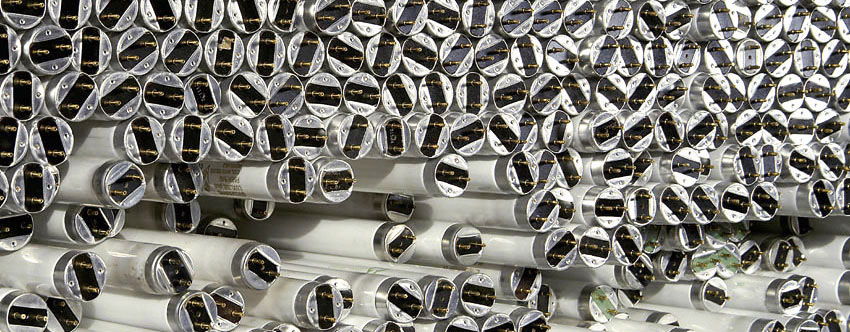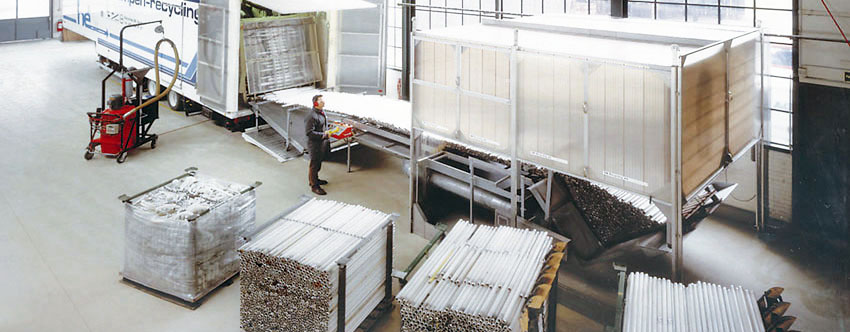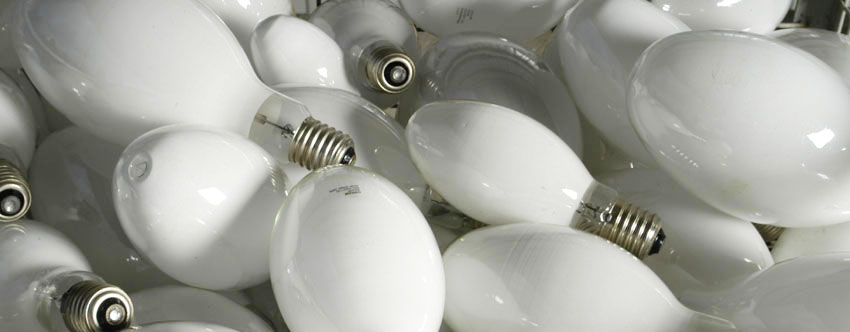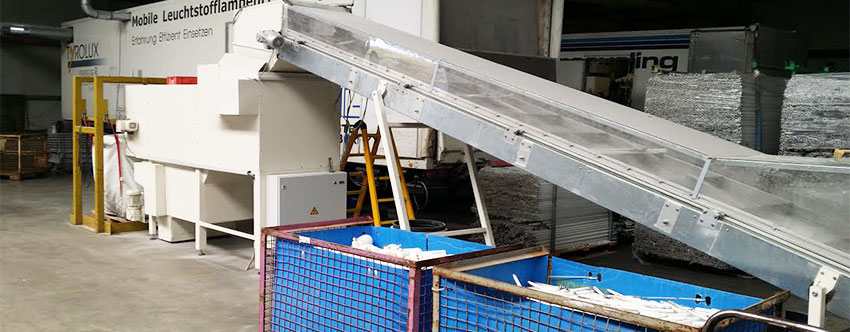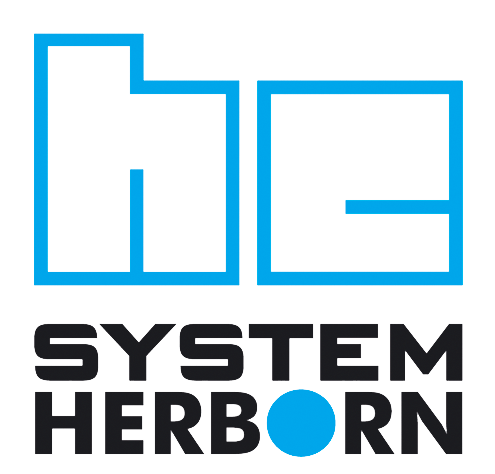Lamp recycling “system herborn“
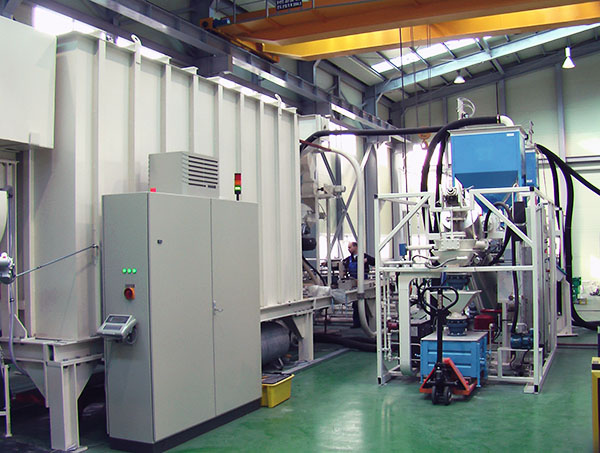 The patented mobile and stationary lamp recycling method “system herborn” ensures a professional, environmentally friendly and economical recycling of discharge lamps containing harmful substances, outmatching by far the regulations imposed by law.
The patented mobile and stationary lamp recycling method “system herborn” ensures a professional, environmentally friendly and economical recycling of discharge lamps containing harmful substances, outmatching by far the regulations imposed by law.
“system herborn” use air for the transport of all material inside the equipment. This guarantees an absolutely closed system in all its components. The rate of wear is therefore minimized.
The lamps are loaded onto the loading system. From there, the fluorescent lamps are fed onto an automatic conveyor system into an enclosed receiving facility, where the end caps of the lamps are separated from the glass and the glass is crushed.
The pieces of glass and metal are fed into the combustion chamber of an indirectly fired oven in order to vaporise the remaining mercury.
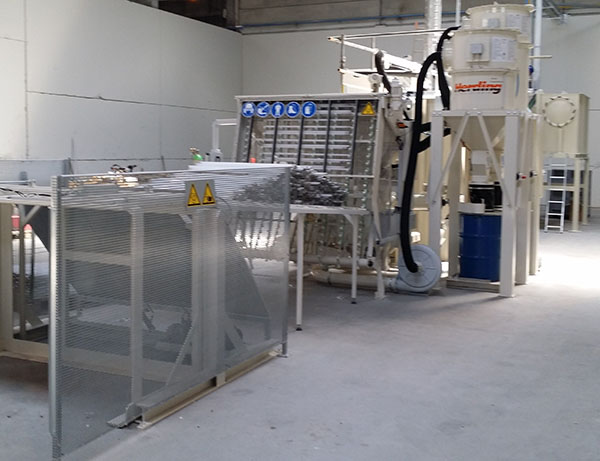 The end caps are supplied into an end cap cleaning system. The rest-materials attaching the caps are removed largely mechanically in this system. The cap-outbreak (broken glass) is secreted over a filter-system.
The end caps are supplied into an end cap cleaning system. The rest-materials attaching the caps are removed largely mechanically in this system. The cap-outbreak (broken glass) is secreted over a filter-system.
The air stream for the conveying circuit is produced by side canal compressors. The design of the system is such that the processing areas of the unit are kept in a relative vacuum. This means that no hazardous materials are allowed to escape into the environment.
The material is then conveyed into a pressure-tight container. At this stage the secondary material undergoes a subsequent time controlled heat treatment to minimize the residual mercury contamination.
The air stream containing the hazardous material passes through a heat exchanger before entering the active carbon filter. The relatively high temperature (generated through compression) is cooled down to the optimal temperature for the removal of mercury by binding it to the active carbon.
The entire process air is fed to the working and lamp feeding section, so that the harmful substances generated there are sucked off by the working section and fed into the system. The intoxicated air is led through filter systems and, after undergoing a sophisticated process, cleansed by an activated-carbon filter.
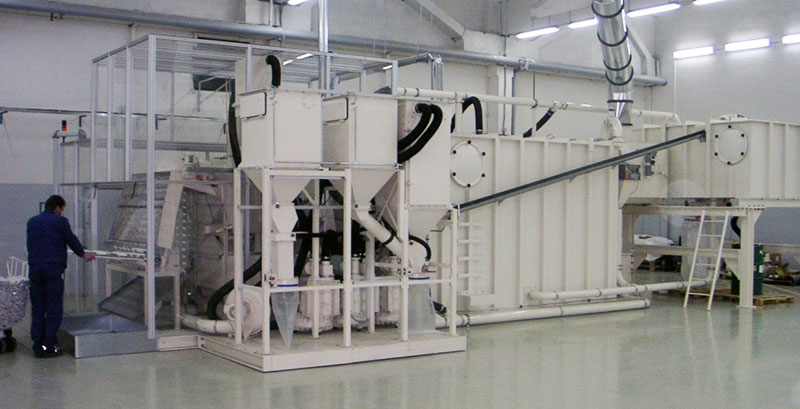 All dust filters used in this unit have been tested by the German "Berufgenossenschaftlichen Institut für Arbeitssicherheit (BIA)" - an industry run institute for safe working practices - for their efficiency.
All dust filters used in this unit have been tested by the German "Berufgenossenschaftlichen Institut für Arbeitssicherheit (BIA)" - an industry run institute for safe working practices - for their efficiency.
This technological principle is groundbreaking for the recycling of lamps and is used successfully in several countries.
Herborn provides an overall concept for the disposal of discharge lamps, designed to meet the individual demands of the customer and the respective country.


